At least once in his life, every modern person came across the problem of parasites in the body.The amount and diversity of the parasites, which cannot live in the literal sense of the word without us, are simply huge.Parasites in the human body use it as a source of food and habitat until they completely exhaust it without output their presence.
Parasites are microscopic sizes or can grow up to several meters, but even in this case, their vital activity in the body cannot always be felt.As a rule, one person does not feel them and do not even know about their presence.In the meantime, they can live in a human body for years and even decades, which causes irreparable damage.
Parasites in the human body represent a serious danger and are a great threat to human health, since they violate the work of internal organs and systems, disturb the work of the immune system and the complete assimilation of useful substances, vitamins and minerals.In some cases, the situation is so serious that it can even lead to death.
Types of relationships between organisms
In nature there are different types of relationships between organisms that have a different effect.
The influence of one species on another can have both neutral and positive and negative.
There are also different combinations of such relationships.Differentiate:
- Symbiosis;
- Neutralism;
- Antibiosis.
Symbiosis is a form of relationships between two organisms, from which both benefit from it.
Neutralism is a kind of biological connection that exists in the damage of two organisms in one area, but at the same time are not connected and do not affect each other directly.
Antibiism is an antagonistic kind of biological relationship in which a kind of population restricts the possibilities of another and disadvantageously influences it.One of the most negative types of antibiism is parasitism.
Parasitism and parasites
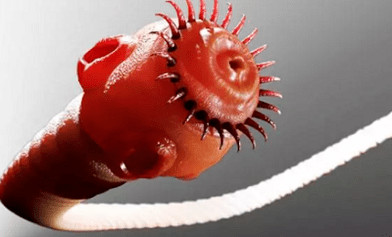
Parasitism is a form of antibiotics in which representatives of a kind of different kind are used as a temporary or constant environmental environment and as a source of nutrients.
Biological organisms that live at the expense of another organism are referred to as parasites.
Parasites do not kill their owner, but use it for a long time as a source of food and habitat.
The parasites include:
- parasitic worms;
- pathogenic bacteria;
- Protozoa;
- Mushrooms;
- Viruses.
The host organisms can be:
- Bacteria;
- Protozoa;
- Plant;
- Animals;
- Human.
In the development process, parasites hand over several stages of development from eggs and larvae to adults (sexually ripe, invasive), which indicates their long life and must change 2-3 owners.
Classification of parasites
All parasites are divided into a bond and optional.
Oblige parasites outside the body of the host either in an inactive state or exist in an inactive state.For example: viruses.They lead an exclusively parasitic lifestyle, ie they are completely dependent on the owner and activate their activities in it.
Optional parasites lead a parasitic lifestyle, but can exist in an absolutely normal form in the external environment in absolutely normal form.For example: pathogenic fungi and bacteria.
Through the nature of the relationship with the guest body, they share:
- true parasites;
- Wrong parasites;
- Super parasites.
True parasites are the same binding parasites for which a parasitic lifestyle is the only form of survival.However, there are parasites that can either be a bond (constant) and optional (time).For example: lice, fleas, intestinal helminth.
False parasites - voluntarily living organisms that are able to live in it for some time in the event of accidental entry into the body.For example: larvae of a room fly in the intestine of a person.
Super parasites are parasites that live in other parasites.For example: bacteria and viruses in other parasitic insects that live in other organisms.
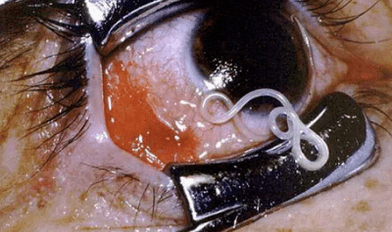
Depending on the duration of the interaction with the host body, they differentiate:
- constant parasites;
- Temporary parasites.
Constant parasites are organisms that lead their entire life cycle in the body - the owner and the larvae add it.For example: ascarides, tapeworms, lice.
Temporary parasites;Live and eat at the expense of the owner at a certain stage of development.For example: larvae of a volt figure fly and an Imago (Adult Insects) -in fleas and mosquitoes.
At the point of the host body, the parasites are divided into:
- Ektoparasites;
- Endoparasites.
Ektoparasites are organisms that live on the skin of the host body.For example: lice, fleas, ticks.
Endoparasites are organisms that are in the tavern.Endoparasites are divided into:
- Internal parasites;
- Tissue parasites;
- intracellular.
Intra capture parasites are organisms that are located in cavities associated with the external environment, e.g.
Fabric parasite-one kind of organisms that are located in closed cavities and tissues of the host body, e.g.B. liver bacon, cystic of tapeworms.
Intracellular parasites are located in the body's cells - for example the owner: malaria plasmodia, toxoplasma.
In terms of distribution in the environment, parasites are:
- Curly, encountered everywhere;
- Tropical, which are only common in hot, tropical climate.
According to biological and epidemiological properties, parasites are divided into:
- Geogel Minister- These are parasites that initially develop in the human body and then in the external environment (e.g. earth);
- Organic minister- Parasites in which the development cycle takes place not only in the human body, but also in the organisms of other creatures.One person is usually the last owner and sometimes a means.
- Contact HelminthenThey differ from the body of the host by ripening or half -gravel, which is why it is possible to repeat their infection or infection of another person (auto -nasia, reinvasia).
How parasites fall into the human body
There are many cheap factors that contribute to the entry of parasites into the human body:

- dirty hands;
- Animal hair;
- poorly cooked products (digestive factor);
- Contact-household factor;
- transferable;
- Percutant.
Dirty hands are the main source of infection with parasitosis.There are a number of diseases called "diseases of dirty hands".Larvae of worms that first fall on the skin of the hands and then cause characteristic symptoms from the stomach intestine tract in the mouth.The transmission path of these infections is called faecal oral.So helminthen falls into our body with contact helminthiasis.For example, ascarid eggs enter the human body through dirty hands, poorly washed vegetables, fruit, berries, greens and are also spread over flying.
Animals and their wool are a source of Ascarid and Liphyli with worms.For example, stay vitality (up to 6 months) for a long time that has fallen out of the wool of the animal and penetrate carpets, things, bed linen, children's toys and hands into the food wing.
Through wet breathing, dogs and cats can also dissolve parasite eggs at a distance of 3 to 5 meters.There are also fleas on the wool of dogs and cats that also tolerate worm eggs.
The digestive method of infection with parasites is carried out:
- By poorly washed vegetables and fruit;
- poorly cooked food (mostly meat);
- Infected water.
For example, an incorrectly cooked barbecue, jerky or homemade lard can infect a person with trichinellosis and echinococci, and poorly cooked dry fish or caviar can cause infection with opisthorchiasis and a wide adhesive tape.
The transmitting infection method is used using blood -sucking insects, for example: ticks, mosquitoes, lice, fleas, insects.
Contact - The domestic infection path is carried out by an infected person or an animal if you contact or use common household items.
The percutaneous infection method takes place during bathing in reservoirs or in contact with infected soil.Larven penetrates the body through the mucous membranes or human skin during contacts with water or infected soil.
Features of the device
Almost all parasites are very adaptable to survival.There are a number of factors that contribute to their high vitality:
- A long life expectancy.For example, Helminthen live in the human body for years and sometimes just as much as the owner.
- Helminth -eggs have been in the external environment for decades and cannot collapse.
- The parasite's stage of development also contributes to its life expectancy.There are all stages of development, starting with the egg, the larva and the change of the owner in the event of a defect in nutrients.
- The ability of parasites to cause immune deficiency in the owner that enables them to penetrate pathogenic active ingredients from the outside and in "absorbing" infections.
- Helminthen, which falls in the stomach -intestine area of a person, produce anti -enzymes that enable them to say goodbye to their own death, but at the same time against the normal food process and cause toxic reactions in their host: asthma, urticaria, dermatitis.
- The invulnerability of parasites is associated with the exchange of genetic information during sexual reproduction, which leads to the stability of its heterogeneous population.
- The great vitality of helminths in many habitats: soil, water, animals, plants.
- The lack of effective methods of immunoprophylaxis, since parasites can suppress or change the host's immune response.
How to identify parasites in the body
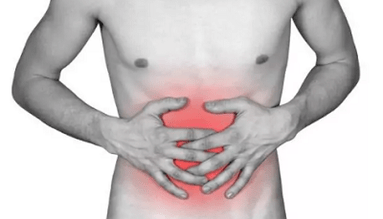
As a rule, one person asks such a question if their health is thoroughly undermined.It is common for a person to dismiss the problem in its initial phase until it develops into a serious form and affects its well.
Since parasites are divided into the body by the habitat - the owner in endoparasites and ectoparasites, the symptoms are divided into internal and external.
Ektoparasites are characterized by a certain activity, which is manifested by the following symptoms:
- Rashes;
- Itching;
- Combustion;
- Hyperemia;
- Pain (if it was a bite);
- The presence of a wound at the place of a bite.
Recognizing endoparasites is much easier.The following actions are carried out for this:
- visual identification (if the penetration from the outside is present through the skin);
- Microscopic examination.
The discovery of ectoparasites is a difficult task, since the “relatives” have adapted to survival as part of evolution, while they do destructive work in the body of the host during disguise and without giving themselves.After all, a person, for example, has lived with worms since his appearance, and the phases of their development can take several months to a decade.How can you determine the presence of parasites in the body?
External and internal manifestations
Since parasites differ in a long life expectancy and actively multiply in the human body, they cause symptoms that are recurring and chronic in the long term.
External manifestations of parasite activity include:
- Rash;
- Itching;
- Combustion;
- Hyperemia;
- feverish condition;
- Quinckes edema.
It is important to know that the degree of allergy development depends on many factors:
- Place of the parasite in the body;
- Parasite contact with tissues and vital organs;
- The amount of toxins produced.
The following symptoms include violations in the body of the internal invasion:
- Disorders in the work of the stomach intestine tract (nausea, diarrhea, rumps);
- Weight fluctuations in connection with a lack of nutrients and a decrease in the appetite;
- Demand for sweets due to metabolic disorders and general weakening of the body;
- Chronic fatigue syndrome, which manifests itself through general fatigue, sleepiness, insomnia, impairment of concentration and memory;
- Constant headache caused by the weakness of the body and poisoning;
- Teeth in a dream (bruxism), manifests itself especially in children;
- Swelling of the limbs;
- Nervous disorders and mental disorders, since parasites can cause depression and irritability;
- Paroxysis painter cough;
- Muscles and joint pain;
- Painful skin pallor;
- Skin lesions (dermatitis, eczema, acne and acne).
It is particularly important to know the general symptoms that are observed in parasitic intestinal vasion.
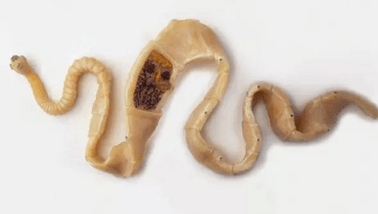
Violations in the digestive tract, which manifest themselves through the following symptoms:
- Colon cramps;
- Irritable bowel syndrome;
- Flatulence;
- Constipation or diarrhea;
- Change the color of feces;
- Itching in the anus;
- Visual detection of helminthen;
- The presence of worms in the gag.
Since worms in the body can achieve considerable sizes, they can physically difficult and violate the work of other organs, for example the bile ducts.
Parasites can cause violations in the work of a certain organ or a specific system.
The most common violations are:
- Anemia.
- Lesions of the central nervous system.
- Abscesses in the liver.
- Purulent inflammation of the gallbladder and pancreas.
- Fruits in the work of immunity up to the development of autoimmune reactions.
- Disruptions when operating the respiratory system.
- Common illnesses.
Diagnosis of parasites
All symptoms mentioned above cannot always confirm the presence of parasites in the body, since these symptoms can be observed in many diseases.
You can define the presence of parasites in the human body when examining feces.However, this method is unreliable because the parasite larvae cannot always jump through a microscope or skip.In addition, not all parasites lay many eggs.
In order to recognize parasite larvae in feces, it is necessary to use up to 8 to 10 times a stool analysis.But if in this case the analysis does not show anything, but the doctor has doubts, a number of serological blood tests are prescribed that help recognize antibodies of helminths that appear in the blood a few weeks after infection with parasites.
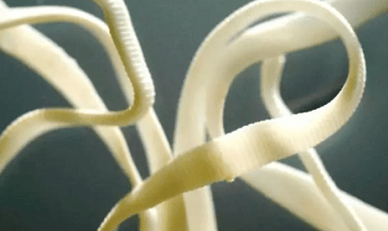
There are other methods for identifying the "relatives".The so -called string test.A cord with a capsule is inserted into the intestine through the nose and removed after four hours together with the rehearsals obtained.
Another method is a colonoscopy in which the specialist looks at the condition of the inner surface of the large intestine using a special probe.
Specialists found that the most common parasites are helminths.In addition, they are all very viable and fertile, and their goal is to destroy their master and to achieve maximum advantages for themselves.
How to remove parasites from the human body
It is difficult to get rid of parasites, but it is possible.It is important to set priorities: it is not only necessary to know how to get rid of parasites, but also to understand what the treatment process itself is.It is carried out in three directions:
- The destruction of parasites in all stages of existence.This means that it is necessary not only to adults, but also larvae and their eggs.
- Normalization of the work of all organs and systems of the body.
- Restoration of the body.
In order to meet all three of the above -mentioned objects, modern drugs that are based on system components that the specialist will prescribe help help.
Such drugs are modern medication and have a certain therapeutic effect.By using these drugs in the complex, you can combine your therapeutic effect and achieve a wonderful result.
Dosage and combination of medicines are carried out on the basis of:
- Stages of parasitic invasion;
- General condition of the patient;
- the availability of complications by a certain body;
- Severity of the course of the disease.
The priority of Anthelmintic medication is based on:
- Efficiency;
- Security;
- The possibility to combine several medication for the best therapeutic effect.
Treatment with folk remedies is a very effective way to get rid of parasites.In most cases, grass cleaning tea is used, which neutralizes the harmful effect of parasites, cleans the liver and gallbladder.
You prepare tea as follows: Take a tablespoon of the following plants: oak bark, Buckthorn, Wormwood, Tanzy.Then a tablespoon of a plant mix with 500 ml of boiling water is poured and left in a closed bowl overnight.In the morning, 100 grams of the resulting tincture are drunk on an empty stomach.The treatment continues for two to three weeks.
Pumpkin seeds are also very effective in the fight against parasites.In order to get rid of parasites, 300 grams of pumpkin seeds are taken, they are cleaned by the shell, but at the same time they leave as much transparently as possible, which envelops the seeds.Sama must be eaten on an empty stomach in the morning.This recipe not only eliminates parasites, but also improves the functioning of the intestine, stomach, the liver and gallbladder.























